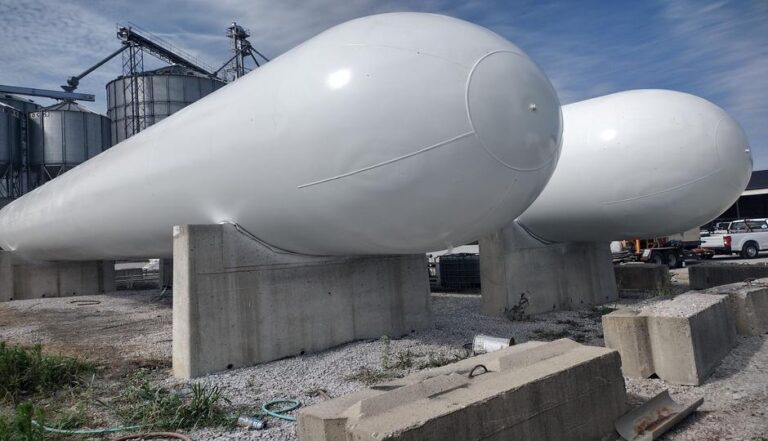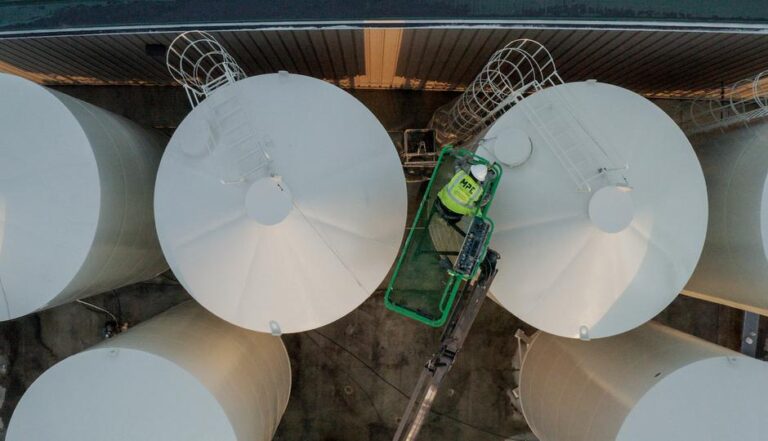Dry Ice Blasting & Cleaning Services
Markley’s Precision Company (MPC) stands as a leader in the blasting industry, offering top-notch Dry Ice Blasting and Cleaning solutions across Ohio and throughout the USA.
With years of experience and a deep commitment to quality and customer satisfaction, MPC has built a reputation for excellence. Our extensive service area ensures that businesses nationwide can benefit from our expertise in dry ice blasting.
What is Dry Ice Blasting
Dry ice blasting, also known as dry ice cleaning, is a revolutionary cleaning method that uses solid CO₂ pellets or microparticles. This process involves the sublimation of dry ice, where it transitions directly from a solid to a gas, lifting contaminants from surfaces without leaving any residue.
How Does It Work
Dry ice blasting works by accelerating dry ice particles at high speeds to impact a surface. Upon contact, the dry ice sublimates, creating a mini-explosion that lifts dirt, grime, and other contaminants off the surface. The types of equipment used in this process vary from handheld units for smaller jobs to larger, industrial-grade machines for more extensive projects.
Send Your Request And Get A Free Quote


























Why Choose Us?
Broad Surface Blasting Expertise
Eco-Friendly Media
Precision Exceeding Industry Standards
Customized Blasting Solutions
Innovative Dry Ice Methods
Zero Damage Promise
Regulatory Compliance Assurance
Anywhere In The USA
Dry Ice Blasting Applications
Surfaces: Metal, Plastic, Rubber, Wood, Concrete and Brick
Industrial Equipment Cleaning
Food Processing Equipment Cleaning
Paint Removal in Automotive Manufactu-
ring
Fire Damage Restoration
Paint Stripping
Artefact Restoration
Adhesive Removal
Graffiti Removal
Public Transport Cleaning
Marine Vessel Cleaning
Electrical equipment cleaning
medical equipment cleaning
printing presses cleaning
Cleaning production molds
Historical Building Restoration
Specialized Applications
Nuclear decontami-nation
Cleaning radioactive materials safely
Aircraft maintenance
Cleaning sensitive aircraft components
Mold remediation
Removing mold from buildings without introducing additional moisture
Benefits of Dry Ice Blasting Over Traditional Cleaning Methods
Non-abrasive and non-conductive
Environmentally friendly
No additional cleanup
Versatility
Reduced downtime
Effective cleaning
Health and safety benefits
No moisture
Cost-effective
Let’s talk about your Dry Ice Cleaning Project Requirements - send your request now!
Dry Ice Blasting and Cleaning - Your Curious Queries
Yes we do offer our services across the United States.
The cost of dry ice blasting needs to be considered with downtime costs of your facility. More times than not, dry ice blasting is the least intrusive, safest, and sometimes quickest cleaning method of equipment and due to its nature of no moisture, not abrasive, non-conducive, its safe on machined parts, electrical components, and many other surfaces. Although upfront dry ice blasting will likely be the most expensive out of your options as far as an hourly rate or cost to handle the job, it is usually the most cost effective option when equipment downtime is expensive and can be avoided by using this method.
The duration of a dry ice blasting project can vary widely depending on several factors, including the size of the area to be cleaned, the complexity of the surfaces, the type of contaminants, and the equipment used. Here are some project examples along with estimated times:
| Project Size | Project Type | Estimated Ice Blasting Time |
| Small-scale Projects | Automotive Parts Cleaning | few hours to half a day |
| Small-scale Projects | Food Processing Equipment | several hours |
| Medium-scale Projects | Industrial Machinery | full day or more |
| Medium-scale Projects | Building Restoration | 1-2 days |
| Medium-scale Projects | Commercial Kitchen Equipment Cleaning | 1-2 days |
| Medium-scale Projects | Mold Remediation in a Building | 2-3 days |
| Medium-scale Projects | Factory Equipment Cleaning | 1-2 days |
| Large-scale Projects | Factory or Warehouse | several weeks to months |
| Large-scale Projects | Ship Hulls | several days, weeks, or months |
Factors Affecting Time:
- Preparation: Setting up containment areas, protecting sensitive equipment, and preparing the dry ice blasting equipment.
- Cleaning Time: The actual time spent blasting surfaces to remove contaminants thoroughly.
- Post-Cleaning Inspection: Checking cleaned surfaces for residue and ensuring the cleaning objectives are met.
- Clean-up and Disposal: Removing waste materials and preparing equipment for future use or storage.
To ensure safety during the dry ice blasting process, we implement several key measures:
- Operators and bystanders are protected by wearing personal protective equipment (PPE) such as safety goggles, gloves, ear protection, and, when necessary, respiratory masks.
- Adequate ventilation is maintained to disperse CO2 gas.
- Operators receive thorough training, and regular equipment inspections ensure safe operation.
- We designate blasting areas with clear signage and containment measures to restrict access.
- To prevent cold exposure injuries, appropriate clothing and breaks in warm environments are provided.
- An emergency action plan is in place, with first aid supplies readily available.
We consider environmental impacts and conduct thorough risk assessments before starting each job.
We adhere to NACE, SSPC, AAMP, EPA, OSHA, and dry ice equipment manufacturer standards. Although there is not required certification for a dry ice blaster, we see to it that all operators are trained and get a training certificate with the equipment manufacturers we use.
Preparing your facility for our dry ice blasting/cleaning ensures that the process is safe, efficient, and effective. Here are steps you can take to prepare:
1. Conduct a Site Assessment:
Identify areas and surfaces that need cleaning with dry ice blasting.
Evaluate the condition of surfaces to ensure they are suitable for this cleaning method (e.g., sensitive electronics, delicate machinery).
2. Develop a Cleaning Plan:
Determine the sequence and priority of areas to be cleaned.
Plan for any necessary downtime or scheduling adjustments to accommodate our cleaning process.
3. Ensure Proper Ventilation:
Dry ice blasting produces CO2 gas as pellets sublimate on impact. Ensure that your facility has adequate ventilation in the cleaning area to prevent buildup of CO2 gas.
4. Clear and Protect Surrounding Areas:
Remove or protect items that are sensitive to cold temperatures or could be damaged by the cleaning process (e.g., electronics, sensitive equipment).
Cover nearby equipment or machinery to prevent abrasive residues from affecting them during cleaning.
5. Coordinate with Maintenance Teams:
Inform maintenance and operational teams about the cleaning schedule to minimize disruption and ensure support if any issues arise.
Coordinate shutdowns or adjustments in production schedules as needed.
6. Communicate with Staff:
Notify staff working in the facility about the cleaning schedule and any safety precautions they need to observe.
Clearly mark off cleaning areas and restrict access as necessary during the process.
7. Arrange for Waste Disposal:
Plan for the disposal of contaminants removed during cleaning, adhering to environmental regulations and guidelines.
Ensure proper containment and disposal methods for any hazardous materials if applicable.
Dry ice blasting requires specialized equipment designed to handle and propel dry ice pellets effectively. Here are the key components involved in our dry ice blasting process:
1. Dry Ice Pelletizer:
Converts liquid carbon dioxide (CO2) into solid dry ice pellets.
2. Dry Ice Storage Container:
Stores the dry ice pellets before use.
3. Dry Ice Blasting Machine (Blasting Unit):
Propels the dry ice pellets at high speeds towards the surface to be cleaned.
4. Blasting Gun:
Directs the stream of dry ice pellets and compressed air onto the surface to be cleaned.
5. Air Compressor:
Provides the compressed air necessary to propel the dry ice pellets.
Description: The air compressor delivers high-pressure air to the blasting unit, ensuring consistent and adequate force to propel the dry ice pellets at desired velocities.
6. Additional Equipment:
Personal protective equipment (PPE) such as gloves, goggles, and hearing protection for operators.
Accessories: Such as brushes, scrapers, or vacuum systems for removing loosened contaminants during or after blasting.
For our clients equipment, standard maintenance of your equipment, building, facility should continue. Nothing additional is required beyond that after dry ice blasting.
Yes, dry ice blasting is environmentally safe as it uses solid carbon dioxide (CO₂) pellets, which sublimate directly from solid to gas without leaving any secondary waste. This process does not involve harmful chemicals, and the CO₂ used is often a by-product of other industrial processes, making it a sustainable choice that reduces the overall environmental footprint.
Nothing that is created from dry ice itself, the only residue or waste will be what the dry ice blasting process is removing (i.e. grease, dirt, oils, chipping paint, smoke damage, etc.)
Yes, dry ice blasting is highly suitable for cleaning delicate or sensitive surfaces due to its non-abrasive and non-conductive nature.
Applications of Dry Ice Blasting on Delicate Surfaces:
- Electronics Manufacturing: Cleaning production equipment, robots, and other machinery in electronics manufacturing plants.
- Medical and Pharmaceutical: Cleaning medical devices, laboratory equipment, and pharmaceutical production machinery without compromising sterility.
- Heritage Conservation: Restoring delicate historical artefacts, sculptures, and architectural details without causing damage.
- Aerospace and Aviation: Cleaning sensitive components in aircraft, including avionics, sensors, and precision instruments.

